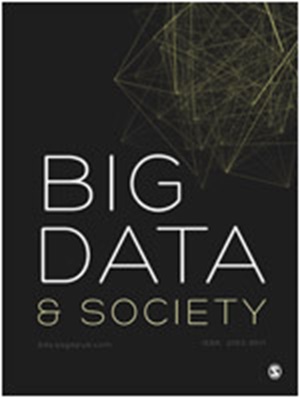Web3作为“自我基础设施”:挑战在于如何实现
IF 5.9
1区 社会学
Q1 SOCIAL SCIENCES, INTERDISCIPLINARY
引用次数: 8
摘要
“Web3”一词是指通过读写和协调数字资产的能力参与数字基础设施的实践。Web3被誉为大型科技公司失败的另一种选择,它提供了一种参与式的数字自组织模式,并通过软件编码的治理规则和参与式实践共享数字基础设施的所有权。然而,在学术文献中,很少有分析框架可以用来研究Web3。本文借鉴了基础设施研究的理论视角,提供了一个分析框架,来探讨Web3这个新兴领域,通过预言性的自我基础设施来探索“如何基础设施”。从数字人种学方法的定性例子中,我展示了Web3的起源如何揭示了它的创造者作为一种预示的政治工具的意图,然而它的实践揭示了在连贯的技术和制度基础设施中表达这些理想的内在张力。因此,我认为Web3正在通过技术和治理实验来解决的一个基本挑战是“如何自我基础设施?”本文章由计算机程序翻译,如有差异,请以英文原文为准。
Web3 as ‘self-infrastructuring’: The challenge is how
The term ‘Web3’ refers to the practices of participating in digital infrastructures through the ability to read, write and coordinate digital assets. Web3 is hailed as an alternative to the failings of big tech, offering a participatory mode of digital self-organizing and shared ownership of digital infrastructure through software-encoded governance rules and participatory practices. Yet, very few analytical frameworks have been presented in academic literature by which to approach Web3. This piece draws on the theoretical lens of infrastructure studies to offer an analytical framework to approach the emergent field of Web3 as an exploration in ‘how to infrastructure’ through prefigurative self-infrastructuring. Drawing on qualitative examples from digital ethnographic methods, I demonstrate how the origins of Web3 reveal the intentions of its creators as a political tool of prefiguration, yet its practices reveal the inherent tension of expressing these ideals in coherent technical and institutional infrastructure. Thus, I argue that one of the fundamental challenges Web3 is negotiating through technical and governance experiments is ‘how to self-infrastructure?’.
求助全文
通过发布文献求助,成功后即可免费获取论文全文。
去求助
来源期刊

Big Data & Society
SOCIAL SCIENCES, INTERDISCIPLINARY-
CiteScore
10.90
自引率
10.60%
发文量
59
审稿时长
11 weeks
期刊介绍:
Big Data & Society (BD&S) is an open access, peer-reviewed scholarly journal that publishes interdisciplinary work principally in the social sciences, humanities, and computing and their intersections with the arts and natural sciences. The journal focuses on the implications of Big Data for societies and aims to connect debates about Big Data practices and their effects on various sectors such as academia, social life, industry, business, and government.
BD&S considers Big Data as an emerging field of practices, not solely defined by but generative of unique data qualities such as high volume, granularity, data linking, and mining. The journal pays attention to digital content generated both online and offline, encompassing social media, search engines, closed networks (e.g., commercial or government transactions), and open networks like digital archives, open government, and crowdsourced data. Rather than providing a fixed definition of Big Data, BD&S encourages interdisciplinary inquiries, debates, and studies on various topics and themes related to Big Data practices.
BD&S seeks contributions that analyze Big Data practices, involve empirical engagements and experiments with innovative methods, and reflect on the consequences of these practices for the representation, realization, and governance of societies. As a digital-only journal, BD&S's platform can accommodate multimedia formats such as complex images, dynamic visualizations, videos, and audio content. The contents of the journal encompass peer-reviewed research articles, colloquia, bookcasts, think pieces, state-of-the-art methods, and work by early career researchers.
 求助内容:
求助内容: 应助结果提醒方式:
应助结果提醒方式:


